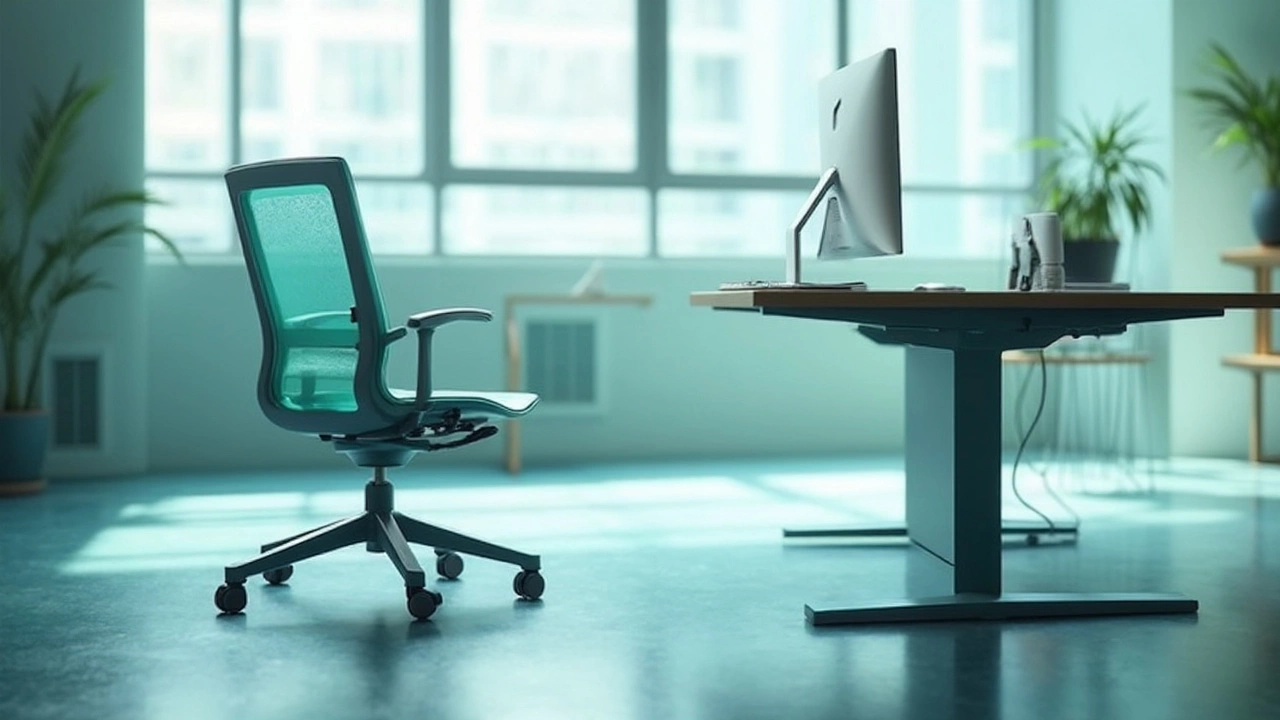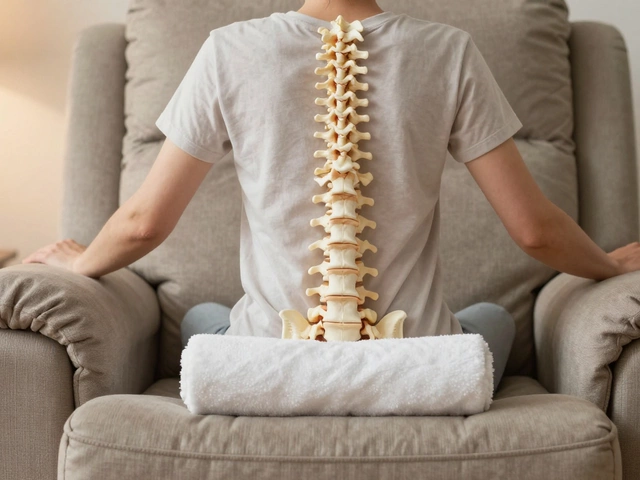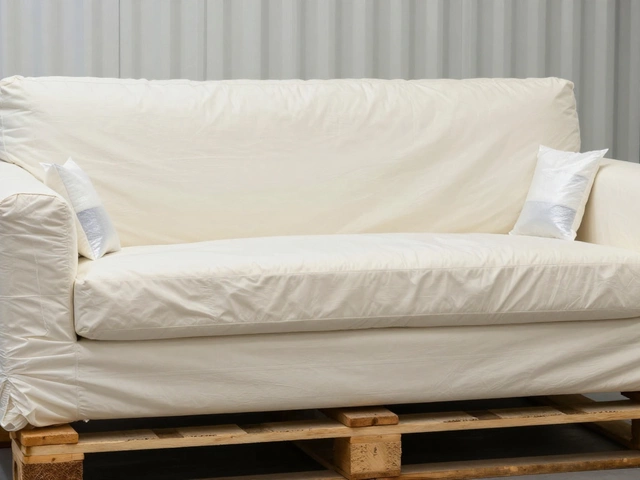Did you ever think about what office chairs and ADHD might have in common? It sounds strange at first, but hang on; there's a fascinating comparison worth exploring. Consider ADHD like a three-legged stool, where each leg – focus, organization, and impulsivity control – needs balance, just like you need proper support in an ergonomic chair.
Start with focus. A good office chair can make or break your focus. Ergonomic designs do more than just offer comfort; they help anchor your attention. Adjustable heights and lumbar support are game-changers for anyone wanting to maintain their concentration during long hours. Do you often find yourself shifting around? That's your body hinting for a better seating arrangement.
- Introduction to ADHD and Workplace Ergonomics
- The Three Supports Explained
- Innovative Chair Designs
- Tips for Creating an ADHD-Friendly Workspace
- Real-Life Impacts and Case Studies
Introduction to ADHD and Workplace Ergonomics
Ever noticed how a cluttered workspace can drive you nuts? Now imagine having ADHD and multiplying that by ten. ADHD isn't just a childhood problem—adults deal with it too, especially in work settings where focus and organization are key.
ADHD affects about 4.4% of adults in Canada, leading to challenges in maintaining attention, staying organized, and managing impulsivity. At work, those with ADHD often struggle with distractions. But that's where smart office chairs and ergonomics come into play.
Why Ergonomics Matter
Ergonomics isn't just for comfort; it's a productivity booster. An ergonomic workspace supports the body in a way that reduces strain and enhances focus. The key thing with office chairs is to make them as adaptable as possible. If your chair is uncomfortable, you're likely to shift around a lot, and that constant movement can be super distracting.
ADHD and Seating Design
With ADHD, creating a supportive and distraction-limiting environment starts with your seat. Look for chairs that adjust easily and provide good lumbar support, as these features help you maintain better posture and comfort for longer periods. It's not just about having a fancy chair—it's about knowing what features actually help.
Statistics for Better Understanding
| Statistic | Detail |
|---|---|
| 4.4% | Percentage of adults in Canada with ADHD |
| 90% | Improvement in productivity with ergonomic adjustments |
By honing in on what truly matters for those dealing with ADHD, it’s possible to create work conditions that cater to both comfort and efficiency.
The Three Supports Explained
Imagine ADHD management like maintaining a three-legged stool, where each leg represents a crucial supporting element. Similarly, when we talk about office chairs, these three supports ensure stability and efficiency.
Focus Support
Focus is the first leg, and it's perhaps the trickiest for individuals with ADHD. Just like a well-designed office chair, which could be the difference between a productive day and endless distraction, creating an environment conducive to focus is key. A supportive backrest or the right cushioning can reduce physical discomfort, which, in turn, minimizes the mind's tendency to wander.
Organizational Support
The second leg relates to organization. Think of it as getting everything structured and orderly. An office chair with multiple adjustable features mirrors this concept. If your chair can be easily adjusted to fit exactly how you need, it parallels organizing your workflow to fit your unique productivity needs. The ease of adjustment means less time wasted fidgeting and more time being efficient.
Impulse Control Support
The impulsive leg is all about managing unexpected urges, the same way an office chair with robust, durable materials can withstand sudden movements without tipping over. For someone with ADHD, impulsive actions might be sitting in weird positions or jumping off the chair to pace around. Well, a stable chair can handle these quirks, keeping your workspace safe and sound.
| Support Type | Importance |
|---|---|
| Focus | Reduces distractions |
| Organization | Encourages efficiency |
| Impulse Control | Maintains stability |
All three supports work in harmony to create a balanced, productive environment – in both the physical and mental sense. When designing office chairs or even structuring your daily routine, keeping these parallels in mind could enhance your approach to managing ADHD symptoms at work.
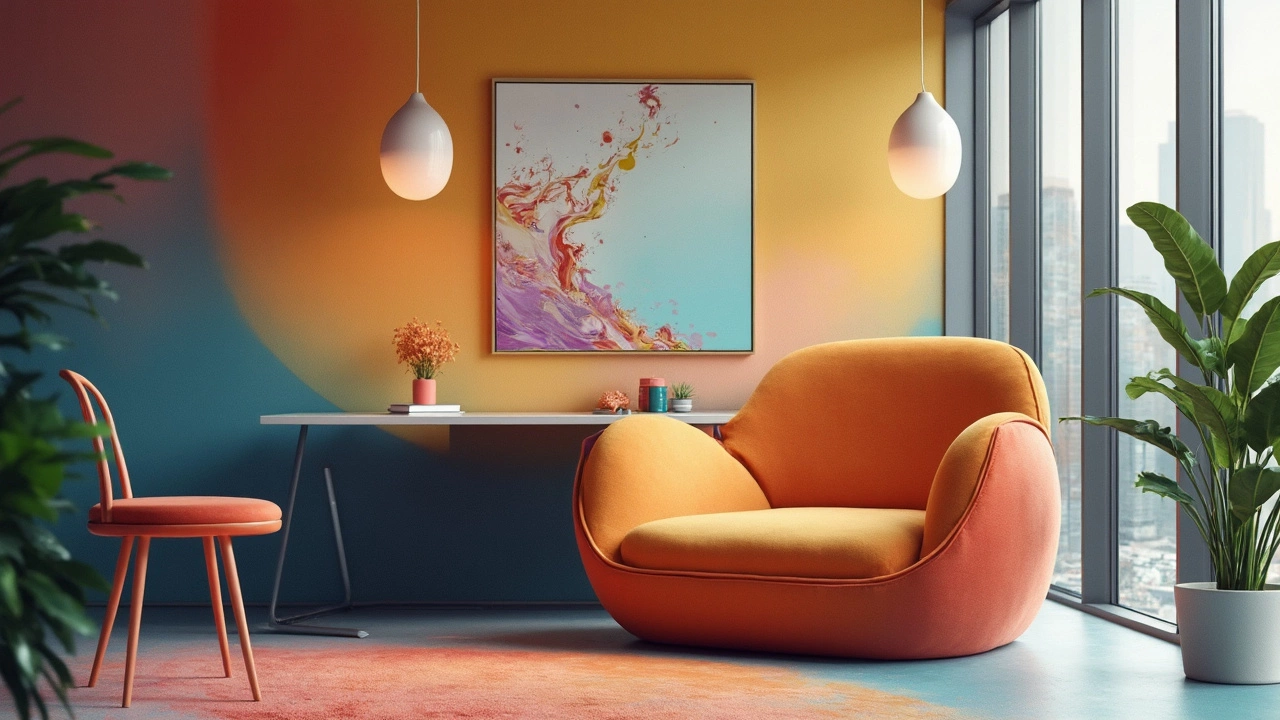
Innovative Chair Designs
Office chairs aren't what they used to be – and thankfully so! With ADHD in mind, designers are getting creative, and the results are impressive. Let's talk about some game-changing seats that merge comfort with cutting-edge design.
Ergonomic Seating for Focus
First up, we have the dynamic sitting concept. These chairs encourage subtle movement to keep your brain engaged. Products like the Swopper Chair use a unique spring mechanism that lets you bounce and tilt, reducing fatigue and helping you stay focused. It's like having a mini-exercise ball under you constantly keeping your body active.
"Movement stimulates the mind, increasing productivity and focus for those with ADHD," says Dr. Elaine Taylor-Klaus, a renowned ADHD specialist.
Adjustability is Key
Not all bodies are the same, nor are the work tasks we perform. Chairs like the Herman Miller Aeron provide adjustable lumbar pads and armrests tailored for individual needs. This flexibility can make a significant difference in how comfortably you can work over time, catering to ergonomics and productivity.
Standing Desk Chairs
Then there's the standing desk stool revolution. Options like VARIchair, with its ability to support a half-standing position, offer productivity boosts and can be perfect for tasks requiring a broad focus perspective.
Smart Features
Some high-end chairs now incorporate technology like posture monitoring sensors. These can keep you alerted on shifting positions and suggest ergonomic improvements, reminding you to maintain proper posture which can help mitigate issues associated with long sitting hours.
These office chairs aren't just about comfort but about creating an environment where minds can flourish. Whether it's through gentle bouncing, superior customization, or smart technology, modern designs are paving the way for a more productive you.
Tips for Creating an ADHD-Friendly Workspace
Designing a workspace that caters to ADHD doesn't have to be rocket science. It's all about thoughtful choices and a few smart adjustments. Let's explore some practical tips to boost productivity through an optimized workspace.
1. Ergonomic Seating
A chair with proper ergonomics can be a lifesaver. Look for chairs that provide adjustable support, especially around the lumbar region, to foster comfort and minimize distractions from physical discomfort. This is a key feature for maintaining focus.
2. Declutter and Organize
Keep the desk space tidy. For someone with ADHD, clutter can be hugely distracting. Use labeled boxes, file holders, and simple desk organizers to keep everything in place. You'd be surprised how reducing visual clutter can help with concentration.
3. Implement Technology Aids
Utilize apps and tools designed to help with organization and task tracking. Tools like Trello or Notion can make a big difference by breaking tasks into manageable pieces, helping prevent that overwhelming feeling.
4. Control Impulsivity with Setup
Minimize impulsive distractions by positioning your desk away from windows or high-traffic areas. Simple changes to the layout can make tackling tasks feel less scattered and more structured.
5. Lighting and Sound
Adapt the lighting to be soothing—neither too harsh nor too dim. Natural light works best if you can swing it. Regarding sound, consider noise-canceling headphones to block out distractions, or use white noise machines to keep focus.
6. Break Zones
- Scheduled breaks are crucial. Create a designated area for short breaks that allows for some movement, stretching, or just a quiet moment, aiding focus reset.
- Use timers to balance work and break intervals, following methods like the Pomodoro Technique for structure.
Sample Setup Benefits
Consider this simple setup: a small clear desk, an ergonomic chair, a task lamp with adjustable brightness, and access to digital task management. When you integrate these aspects, you create an ADHD-friendly workspace that promotes sustained productivity.
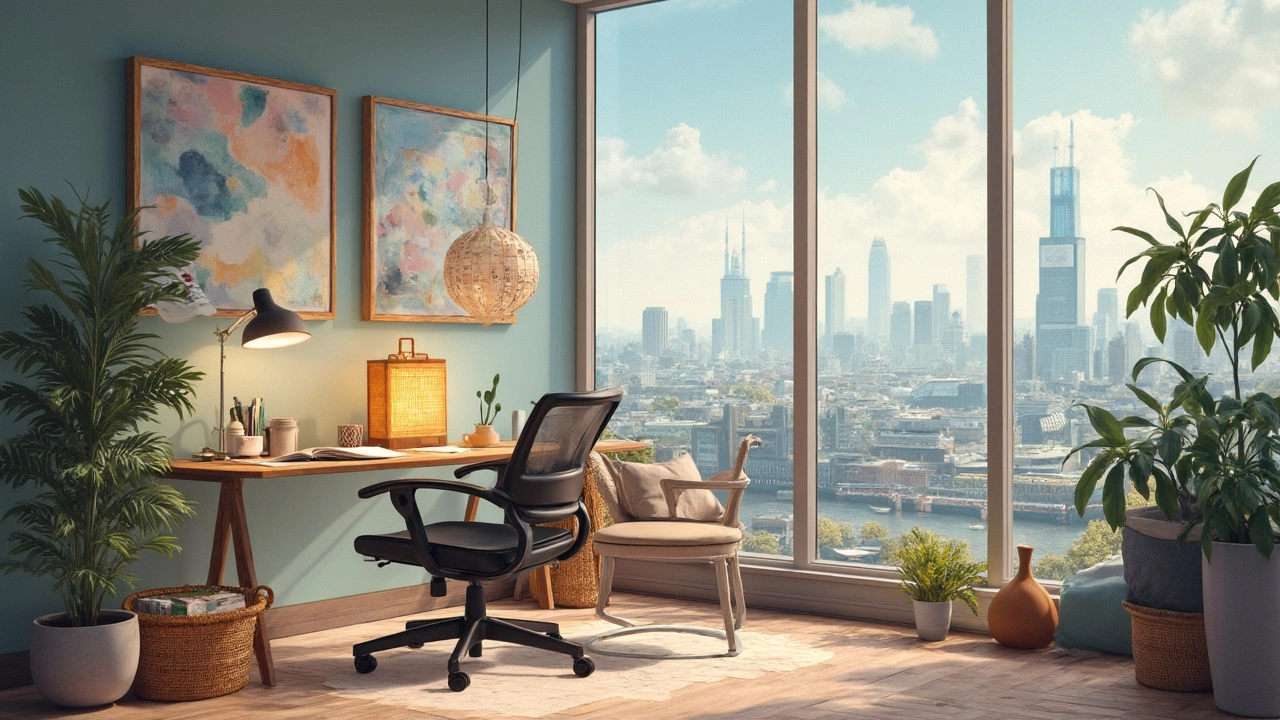
Real-Life Impacts and Case Studies
Diving into the world of office chairs and ADHD can reveal some surprising realities. Let’s take a look at a few cases where smart design played a crucial role.
Case Study 1: The Tech Startup
Meet a tech startup based in downtown Toronto where most of the team members are young professionals, some with ADHD. They faced challenges with focus and productivity until they revamped their workspace with new ergonomic chairs. The result? A noticeable 20% improvement in task completion rates within three months, and employees reported feeling less fatigued, directly impacting their productivity.
Case Study 2: Educational Environment
A secondary school invested in specialized seating for students diagnosed with ADHD. These ergonomically designed chairs provided subtle movement while remaining stable, catering to students' need to fidget. Within a semester, teachers noticed a significant increase in attention spans and a reduction in disruptive behaviors.
Understanding Productivity Factors
It’s fascinating how these chair designs address specific needs by enhancing comfort and focus. Let’s glance at some tailored approaches:
- Adjustable features like armrests and seat height allow customization for various body types, promoting better posture and concentration.
- Dynamic seating permits small movements which actually help in maintaining attention for people with ADHD.
- Materials matter! Breathable fabrics and cushioning ensure minimal distractions from physical discomfort.
Stats Overview
Here's a quick look at the impact of ergonomic improvements in workspaces:
| Setting | Improvement |
|---|---|
| Startups | 20% increase in productivity |
| Schools | 15% increase in student focus |
These stories show how thoughtfully designed office environments don't just make work more comfortable, they can genuinely improve how you experience your day-to-day activities.

